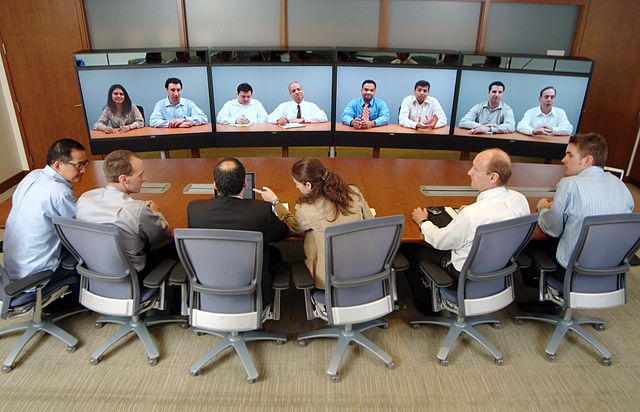Giving an effective meeting is a matter of planning and practice. When done correctly, a video conference is one of the best ways to bring teams together and actually accomplish something. When meetings are done wrong – and they can find so many ways to go wrong – it’s a demoralizing, work-blocking mess that everyone hates. Take some tips on structuring your next video conference, and you’ll find that your meetings have momentum. With IT, you usually don’t have to remind people to test their connections beforehand, nor are reminders to update the app generally needed. However, for meeting novices, it’s a good idea to put some structure in place.
Structure
The Harvard Business Review notes that effective meetings have effective agendas, whether they are videoconferences or location meetings. Designing an effective agenda takes several steps.
- Decide on the purpose of the meeting. Whether you will be running an informative meeting, are seeking input, or coming to a decision needs to be made clear.
- Invite only those who have something to contribute to the meeting or something to gain from meeting and seek their input.
- Keep the meeting to topics that affect everyone in attendance allocate a reasonable amount of time in the agenda.
- List a definitive start time, the amount of time that will be devoted to your topics, and question and answer periods. You should also list a definitive time that the meeting will adjourn so that people can schedule the rest of their day.
- Specify topic leaders and discussion moderators in advance. These people will be responsible for leading the discussion of their assigned topic.
Setting
When you are running a business video meeting for IT, you may have multiple participants signing in and attending from remote locations using the BlueJeans app. Sometimes the locations from which they will be less than ideal. Here are a few tips when talking about appropriate settings.
- Ideally the locations should be quiet, well lit, and free of noise and distractions. Conference rooms are ideally suited for this purpose, however riding the Wi-Fi at your local coffee house may be more distracting to other participants than you think. If you have absolutely no other place to sign in remotely, consider using your car – it’s quiet and well lit.
- Your background should be stationary, especially if you are the one speaking. A mobile background such as a curtain or street scene will distract from what you are saying.
- Make sure that the lighting shows the speakers faces clearly and without distracting shadows. Glare and uneven lighting can be fixed by pulling the shades and removing any glass framed wall art. Northwestern University also recommends not mixing sunlight and fluorescent light in order to protect the quality of images.
- Do make sure that the camera is positioned in order to show the speaker’s face. Weird camera angles distract viewers. The point of a videoconference is to get that face time, not to look up someone’s nose.
Etiquette
- Make sure that attendees know when to arrive and sign on. Make it clear that past a certain point latecomers will not be admitted. This is to avoid disrupting speakers and the meeting schedule in order to catch someone up. Advised that a video copy of the meeting and appropriate documents will be archived.
- When hosting a meeting with people in multiple locations, speakers should introduce themselves both by name and location.
- Ask that everyone keep their microphones muted unless they are speaking at the time. Otherwise everybody will hear coughing, shifting, paper rustling, and other distracting noises.
- Dress appropriately for the crowd. For meetings with the CIO or a new client, office attire is appropriate. For less formal meetings, one may go with office casual. Only those who know each other very well should show up to a meeting and what they would wear to a beach barbecue.
- Pay attention. Don’t check your email. Don’t text. Don’t play Candy Crush. Take notes. Participate. And ask questions.
After the videoconference, the meeting video should be archived and made accessible to participants for follow-up. This includes all documents used in the meeting, as well as any minutes or transcriptions that are made. Follow-up with an action plan that is emailed to all participants, and check that everyone is doing their appropriate follow-up. Appoint someone to take the lead in doing the follow-up and making sure that everyone is on track.
Successful meetings mean that the topics discussed, and the actions planned are actually followed up on and carried out. It’s easy for team members to lose momentum once they are back in their workspaces and catching up. Making meetings effective, easy to attend, and easy to follow up with is the key to giving great meetings that motivate and even inspire. Get your team on the same page by using video conferencing in the most effective manner possible.

